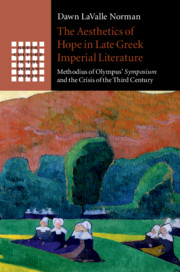 The Aesthetics of Hope in Late Greek Imperial Literature
The Aesthetics of Hope in Late Greek Imperial Literature Book contents
- The Aesthetics of Hope in Late Greek Imperial Literature
- Greek Culture in the Roman World
- The Aesthetics of Hope in Late Greek Imperial Literature
- Copyright page
- Contents
- Acknowledgments
- Introduction
- Chapter 1 Mapping Third-Century Literature from the Severans to Constantine
- Chapter 2 The End of Dialogue?
- Chapter 3 Compilation and Unity in Imperial Sympotic Traditions
- Chapter 4 Rhetoric and the Problem of Rivalry
- Chapter 5 The Lyric Tradition and Changing Hymnic Forms
- Conclusion
- Bibliography
- Index
- References
Bibliography
Published online by Cambridge University Press: 15 November 2019
- The Aesthetics of Hope in Late Greek Imperial Literature
- Greek Culture in the Roman World
- The Aesthetics of Hope in Late Greek Imperial Literature
- Copyright page
- Contents
- Acknowledgments
- Introduction
- Chapter 1 Mapping Third-Century Literature from the Severans to Constantine
- Chapter 2 The End of Dialogue?
- Chapter 3 Compilation and Unity in Imperial Sympotic Traditions
- Chapter 4 Rhetoric and the Problem of Rivalry
- Chapter 5 The Lyric Tradition and Changing Hymnic Forms
- Conclusion
- Bibliography
- Index
- References
Summary

- Type
- Chapter
- Information
- The Aesthetics of Hope in Late Greek Imperial LiteratureMethodius of Olympus' Symposium and the Crisis of the Third Century, pp. 247 - 274Publisher: Cambridge University PressPrint publication year: 2019


